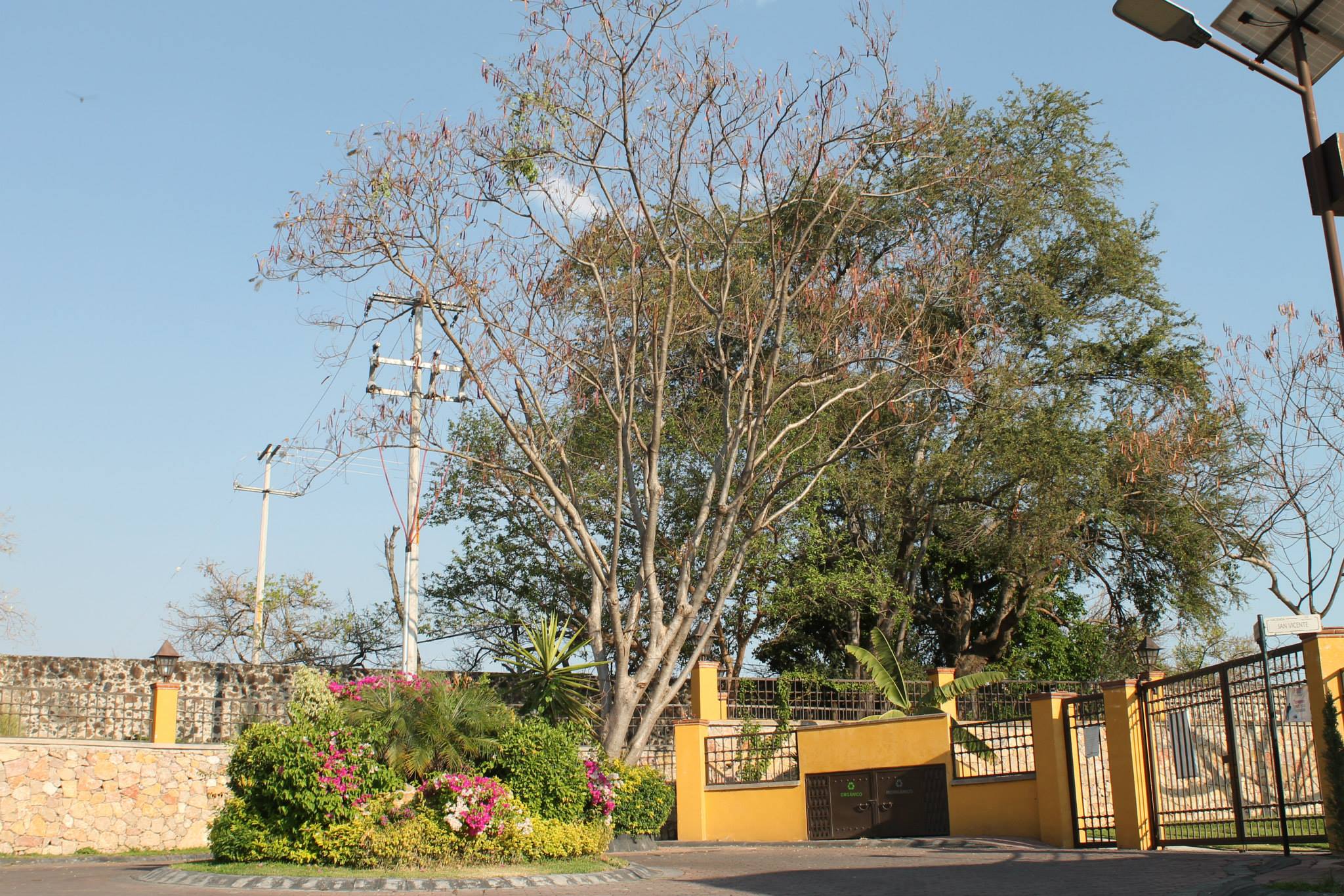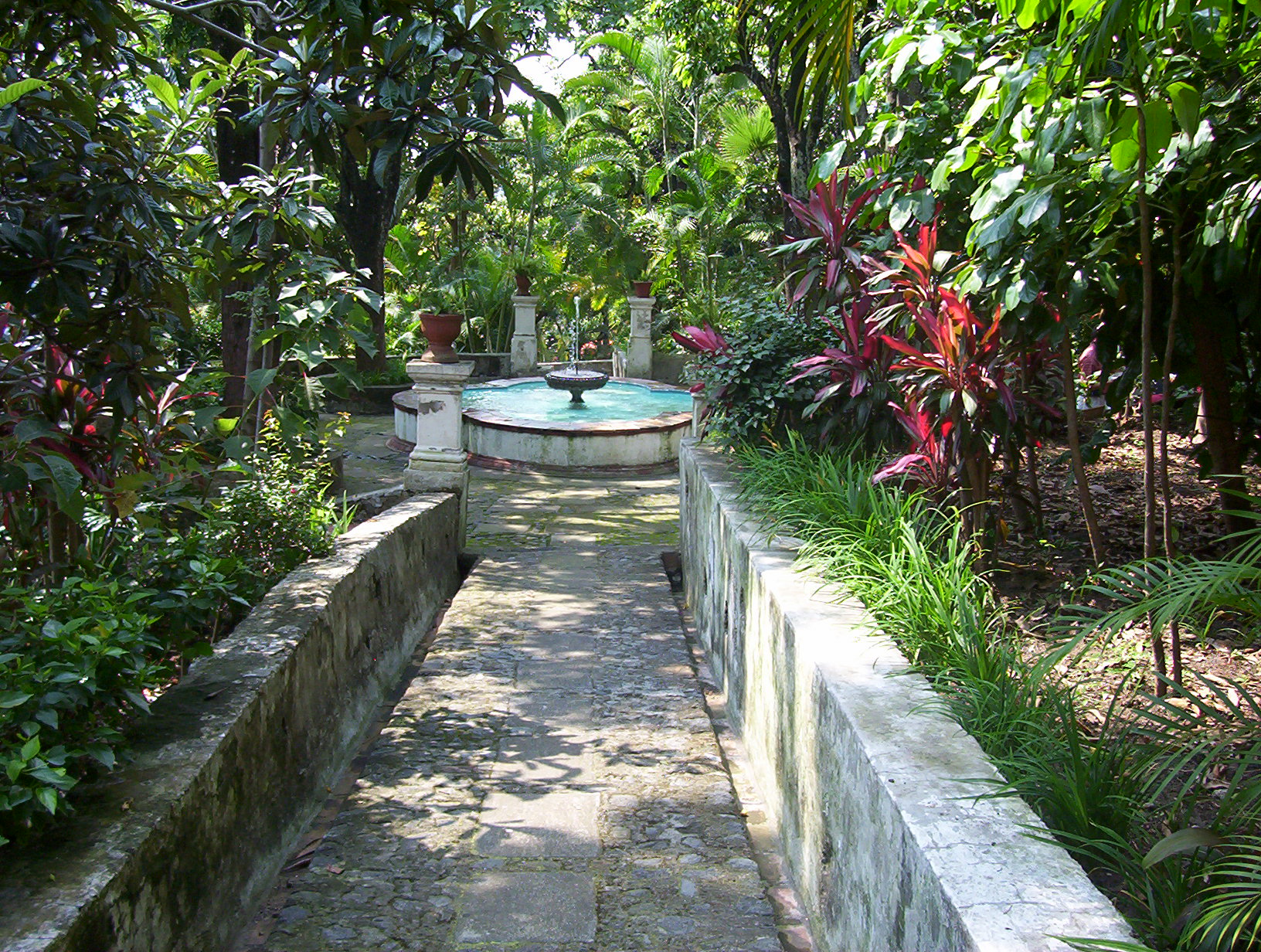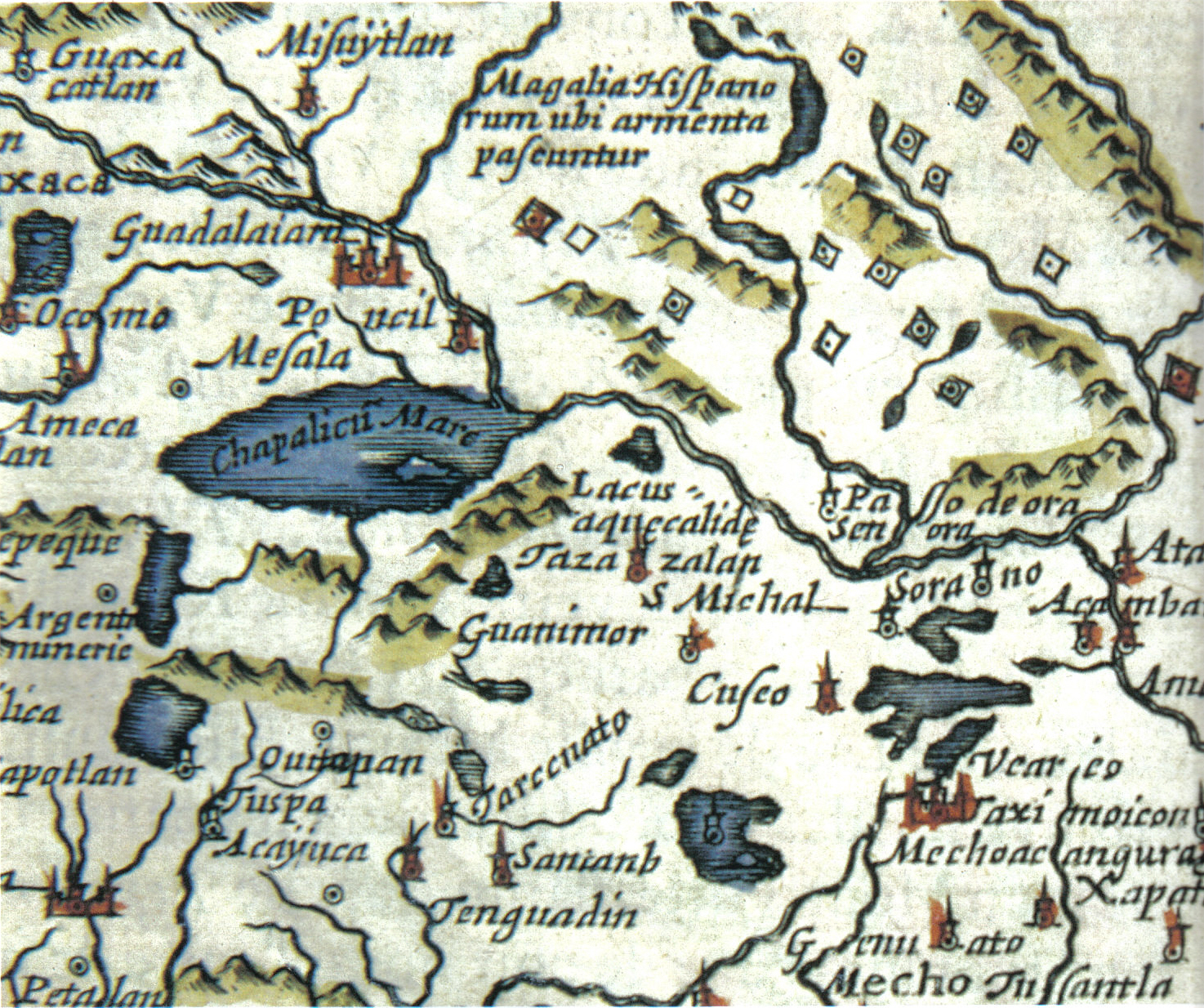|
Huaxtepec
Oaxtepec is a town within the municipality of Yautepec and the Cuautla metropolitan area in the eastern part of the Mexican state of Morelos. Its main industry is tourism, mostly aimed at the inhabitants of nearby Mexico City, and the town possesses various aquatic resorts and hotels. The climate is tropical and the countryside very lush. The population of Oaxtepec is 7,097 (2020). Oaxtepec had 6,939 inhabitants in 2010. During the XIX Olympiad in 1968, Oaxtepec was the venue and staging area for the World Youth Camp component of the Cultural Olympiad. Equestrian events at the 1968 Olympiad were held in Oaxtepec. History In pre-Columbian times, already one of the largest towns in the region, it was conquered by the Aztecs under the rule of Moctezuma Ilhuicamina. During Moctezuma Ilhuicamina's reign (1440–1469), the first leisure center for nobles was created in the warm territory of Oaxtepec, as well as low lands to the south of Tenochtitlan valley, today's Morelos. Moctezum ... [...More Info...] [...Related Items...] OR: [Wikipedia] [Google] [Baidu] |
Morelos
Morelos (), officially the Free and Sovereign State of Morelos ( es, Estado Libre y Soberano de Morelos), is one of the 32 states which comprise the Federal Entities of Mexico. It is divided into 36 municipalities and its capital city is Cuernavaca. Morelos is a landlocked state located in South Central Mexico. It is bordered by Mexico City to the north, and by the states of México to the northeast and northwest, Puebla to the east and Guerrero to the southwest. Morelos is the second-smallest state in the nation, just after Tlaxcala. It was part of a very large province, the State of Mexico, until 1869 when Benito Juárez decreed that its territory would be separated and named in honor of José María Morelos y Pavón, who defended the city of Cuautla from royalist forces during the Mexican War of Independence. Most of the state enjoys a warm climate year-round, which is good for the raising of sugar cane and other crops. Morelos has attracted visitors from the Valley of ... [...More Info...] [...Related Items...] OR: [Wikipedia] [Google] [Baidu] |
Yautepec De Zaragoza
Yautepec is a municipality located in the north-central part of the Mexican state of Morelos. The municipal seat is the city of Yautepec de Zaragoza. It stands at . The city serves as the municipal seat for the surrounding municipality of Yautepec. In the 2020 census the municipality had a population of 105,780, the fifth-largest community in the state in population (after Cuernavaca, Jiutepec, Cuautla, and Temixco). The municipality, which has an area of 203 km² (78.4 sq mi) reported 102,690 inhabitants in the 2015 census. Yautepec de Zaragoza had 44,353 inhabitants in 2020. Other large towns in the municipality are La Joya (population 14,126), Cocoyoc (population 10,178), Oaxtepec (population 7,097), Los Arcos (San Carlos) (population 5,736), Oacalco (population 2,543), Lázaro Cárdenas (El Empalme) (population 1,503), Itzamatitlán (population 1,366), Corral Grande (population 1,189), San Isidro (population 1,153), Ignacio Bastida (Santa Catarina Tlayca) (population 1, ... [...More Info...] [...Related Items...] OR: [Wikipedia] [Google] [Baidu] |
Yautepec, Morelos
Yautepec is a municipality located in the north-central part of the Mexican state of Morelos. The municipal seat is the city of Yautepec de Zaragoza. It stands at . The city serves as the municipal seat for the surrounding municipality of Yautepec. In the 2020 census the municipality had a population of 105,780, the fifth-largest community in the state in population (after Cuernavaca, Jiutepec, Cuautla, and Temixco). The municipality, which has an area of 203 km² (78.4 sq mi) reported 102,690 inhabitants in the 2015 census. Yautepec de Zaragoza had 44,353 inhabitants in 2020. Other large towns in the municipality are La Joya (population 14,126), Cocoyoc (population 10,178), Oaxtepec (population 7,097), Los Arcos (San Carlos) (population 5,736), Oacalco (population 2,543), Lázaro Cárdenas (El Empalme) (population 1,503), Itzamatitlán (population 1,366), Corral Grande (population 1,189), San Isidro (population 1,153), Ignacio Bastida (Santa Catarina Tlayca) (population 1, ... [...More Info...] [...Related Items...] OR: [Wikipedia] [Google] [Baidu] |
Cuautla, Morelos
Cuautla (, meaning "where the eagles roam"), officially La heroica e histórica Cuautla, Morelos (''The Heroic and Historic Cuautla, Morelos'') or H. H. Cuautla, Morelos, is a city and municipality in the Mexican state of Morelos, about 104 kilometers south of Mexico City. In the 2010 census the city population was 154,358. The municipality covers . Cuautla is the third most populous city in the state, after Cuernavaca and Jiutepec. The city was founded on April 4, 1829. The 2020 population figures were 187,118 inhabitants for the municipality and 157,336 inhabitants for the city of Cuatula. The Cuautla Metropolitan Area, the second largest in Morelos, comprises the municipalities of Cuautla, Yautepec, Ayala, Yecapixtla, Atlatlahucan, and Tlayacapan. It covers , which represents 21.26% of the state's total area. The metropolitan population (2010) is 434,187. History Prehispanic history The Olmec group who lived in Chalcatzingo (southeast of Cuautla) founded settlements in Cuautla, ... [...More Info...] [...Related Items...] OR: [Wikipedia] [Google] [Baidu] |
Cuernavaca
Cuernavaca (; nci-IPA, Cuauhnāhuac, kʷawˈnaːwak "near the woods", ) is the capital and largest city of the state of Morelos in Mexico. The city is located around a 90-minute drive south of Mexico City using the Federal Highway 95D. The name ''Cuernavaca'' is a euphonism derived from the Nahuatl toponym and means 'surrounded by or close to trees'. The name was Hispanicized to ''Cuernavaca''; Hernán Cortés called it ''Coadnabaced'' in his letters to Charles V, Holy Roman Emperor, and Bernal Díaz del Castillo used the name ''Cuautlavaca'' in his chronicles. The coat-of-arms of the municipality is based on the pre-Columbian pictograph emblem of the city which depicts a tree trunk () with three branches, with foliage, and four roots colored red. There is a cut in the trunk in the form of a mouth, from which emerges a speech scroll, probably representing the language Nahuatl and by extension the locative suffix , meaning 'near'. Cuernavaca has long been a favorite escape fo ... [...More Info...] [...Related Items...] OR: [Wikipedia] [Google] [Baidu] |
Tenochtitlan
, ; es, Tenochtitlan also known as Mexico-Tenochtitlan, ; es, México-Tenochtitlan was a large Mexican in what is now the historic center of Mexico City. The exact date of the founding of the city is unclear. The date 13 March 1325 was chosen in 1925 to celebrate the 600th anniversary of the city. The city was built on an island in what was then Lake Texcoco in the Valley of Mexico. The city was the capital of the expanding Aztec Empire in the 15th century until it was captured by the Spanish in 1521. At its peak, it was the largest city in the pre-Columbian Americas. It subsequently became a '' cabecera'' of the Viceroyalty of New Spain. Today, the ruins of are in the historic center of the Mexican capital. The World Heritage Site of contains what remains of the geography (water, boats, floating gardens) of the Mexica capital. was one of two Mexica (city-states or polities) on the island, the other being . The city is located in modern-day Mexico City. Etymolo ... [...More Info...] [...Related Items...] OR: [Wikipedia] [Google] [Baidu] |
Siege Of Cuautla
The siege of Cuautla was a battle of the War of Mexican Independence that occurred from 19 February through 2 May 1812 at Cuautla, Morelos. The Spanish royalist forces loyal to the Spanish, commanded by Félix María Calleja, besieged the town of Cuautla and its Mexican rebel defenders fighting for independence from the Spanish Empire. The rebels were commanded by José María Morelos y Pavón, Hermenegildo Galeana, and Mariano Matamoros. The battle results are disputed, but it is generally agreed that the battle resulted more favorably for the Spanish whose siege was ultimately successful with the Mexican withdrawal on 2 May 1812. The siege had many consequences to the political, military and social environment in the contemporary Viceroyalty of New Spain which was ruled since 1810 by Francisco Xavier Venegas. Calleja was turned from military commander of all central Mexico to the military commander of Mexico City after fears began of an insurgent attack on the capital. Mo ... [...More Info...] [...Related Items...] OR: [Wikipedia] [Google] [Baidu] |
Nave
The nave () is the central part of a church, stretching from the (normally western) main entrance or rear wall, to the transepts, or in a church without transepts, to the chancel. When a church contains side aisles, as in a basilica-type building, the strict definition of the term "nave" is restricted to the central aisle. In a broader, more colloquial sense, the nave includes all areas available for the lay worshippers, including the side-aisles and transepts.Cram, Ralph Adams Nave The Catholic Encyclopedia. Vol. 10. New York: Robert Appleton Company, 1911. Accessed 13 July 2018 Either way, the nave is distinct from the area reserved for the choir and clergy. Description The nave extends from the entry—which may have a separate vestibule (the narthex)—to the chancel and may be flanked by lower side-aisles separated from the nave by an arcade. If the aisles are high and of a width comparable to the central nave, the structure is sometimes said to have three naves. ... [...More Info...] [...Related Items...] OR: [Wikipedia] [Google] [Baidu] |
James The Great
James the Great, also known as James, son of Zebedee, Saint James the Great, Saint James the Greater, Saint James the Elder, or Saint Jacob (Aramaic ܝܥܩܘܒ ܒܪ ܙܒܕܝ, Arabic يعقوب, Hebrew בן זבדי , '' Yaʿăqōḇ'', Latin ''Iacobus Maior'', Greek Ἰάκωβος τοῦ Ζεβεδαίου ''Iákōbos tû Zebedaíou''; died AD 44), was one of the Twelve Apostles of Jesus, the first apostle to be martyred according to the New Testament. Saint James is the patron saint of Spain and, according to tradition, his remains are held in Santiago de Compostela in Galicia. In the New Testament The son of Zebedee and Salome, James is styled "the Greater" to distinguish him from the Apostle James "the Less", with "greater" meaning older or taller, rather than more important. James the Great was the brother of John the Apostle. James is described as one of the first disciples to join Jesus. The Synoptic Gospels state that James and John were with their father by the s ... [...More Info...] [...Related Items...] OR: [Wikipedia] [Google] [Baidu] |
Leucaena Esculenta
''Leucaena'' is a genus of flowering plants in the mimosoid clade of the subfamily Caesalpinioideae of the family Fabaceae. It contains about 24 species of trees and shrubs, which are commonly known as leadtrees. They are native to the Americas, ranging from Texas in the United States south to Peru. The generic name is derived from the Greek word λευκός (''leukos''), meaning "white," referring to the flowers. Uses ''Leucaena'' species are grown for their variety of uses, including as green manure, a charcoal source, livestock fodder, and for soil conservation. The seeds (jumbie beans) can be used as beads. ''Leucaena'' planted for firewood on an area of will yield an energy equivalent of 1 million barrels of oil per year. Anthelmintic medicines are made from extracts of ''Leucaena'' seeds in Sumatra, Indonesia. Some species (namely ''Leucaena leucocephala'') have edible fruits (as unripe) and seeds. The seeds of ''Leucaena esculenta'' (in Mexico called ''guaje'' or ''hua ... [...More Info...] [...Related Items...] OR: [Wikipedia] [Google] [Baidu] |
Saint Dominic
Saint Dominic ( es, Santo Domingo; 8 August 1170 – 6 August 1221), also known as Dominic de Guzmán (), was a Castilian Catholic priest, mystic, the founder of the Dominican Order and is the patron saint of astronomers and natural scientists. He is alternatively called Dominic of Osma, Dominic of Caleruega, and Domingo Félix de Guzmán. Life Birth and early life Dominic was born in Caleruega,"Saint Dominic", Lay Dominicans halfway between and in , [...More Info...] [...Related Items...] OR: [Wikipedia] [Google] [Baidu] |






